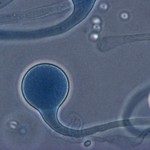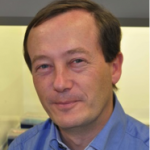Lien vers Pubmed [PMID] – 30417827
Lien DOI – S0163-4453(18)30213-510.1016/j.jinf.2018.06.016
J. Infect. 2018 12; 77(6): 463-468
Latent infections are well-known for bacteria such as Mycobacterium tuberculosis and for viruses such as Herpesviridae and parasites like Leishmania spp. or Toxoplasma gondii. However, invasive fungi may also be latent and come to reactivate. The aim of this review is to clarify the reactivation concept in major fungal invasive diseases.We have searched for PUBMED publications from 1980 to 2017 with the keywords “fungi”, “reactivation”, “latency”, “dormancy”, “granuloma”, “Aspergillus”, “Mucorales”, “Dimorphic fungi”, “Histoplasma”, “Cryptococcus”, “Pneumocystis”, “Yeast”, “Candida” and “Mold”.After primary infection and immune control of the fungus, reactivation can occur following a period of latency. Two conditions must be present: dormancy/survival of the fungi and immunosuppression of the host. Fungal reactivation is easily demonstrated for dimorphic fungi when patients travelling in endemic areas are no longer exposed to fungi at the time they when develop the disease. For cosmopolitan fungi, such as Cryptococcus neoformans, Aspergillus or some emerging fungi, clinical data and animal models have brought some evidence of reactivation. Survival inside macrophages and granuloma formation appear to be predominant conditions to latency. Although granuloma may act as a reservoir for some fungi like Histoplasma or Cryptococcus, its role in mold reactivation has yet to be fully established.The risk of fungal reactivation should be taken into account in patient management, especially in cases of solid organ transplantation or long-term immunosuppressive treatment.


